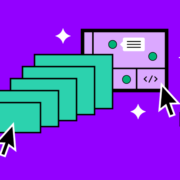Le groupe Kering renouvelle sa confiance en SAP pour ses activités finance, retail et supply chain, avec la mise en place de solutions de nouvelle génération ayant comme cœur l’ERP S/4HANA for Fashion.
Kering est un groupe mondial de luxe qui regroupe un ensemble de Maisons emblématiques dans le monde de la couture et de la maroquinerie, telles que Gucci, Saint Laurent, Bottega Veneta, Balenciaga, Alexander McQueen et Brioni. Kering est également présent dans le secteur de la joaillerie avec les marques Boucheron, Pomellato, DoDo et Qeelin. Enfin, le groupe a créé en 2015 Kering Eyewear, une entité dédiée à la lunetterie haut de gamme et sport. Kering comptait en 2021 plus de 42.000 collaborateurs pour un chiffre d’affaires annuel de 17,6 milliards d’euros.
Depuis quelques années, le groupe est engagé dans un ambitieux projet de transformation digitale, tant au niveau corporate que de ses marques.
Cette transformation en matière d’innovations et de technologies passe notamment par l’harmonisation des fonctions corporate et par le déploiement de services partagés pour les marques afin qu’elles puissent rester dédiées à leur cœur de métier, la création. Dans le même temps, cela implique une simplification et une rationalisation des systèmes d’information (SI) afin d’atteindre l’excellence opérationnelle et de contrôler les coûts.
L’IT joue un rôle clé dans cette transformation de l’organisation. La DSI de Kering a en effet pour vocation de proposer des solutions communes à l’ensemble des entités du groupe. « Nous nous focalisons actuellement sur trois fonctions clés, explique Nicolas Gauthier, Group Chief Information Officer chez Kering : le retail, afin de proposer le bon produit, au bon moment, la supply chain, avec comme objectif une livraison toujours plus rapide des produits et enfin la finance, afin de soutenir les équipes. »
Afin d‘accompagner cette transformation, Kering a choisi un ensemble de solutions SAP innovantes. « Nous voulons mettre en place une plate-forme permettant de se doter de processus plus efficaces, d’effectuer des échanges de données en temps réel et d’harmoniser nos modèles opératoires. Notre système SAP est probablement l’un des plus importants du marché, avec une instance couvrant trois domaines, trois régions et soixante pays. Il est interfacé avec tous nos systèmes, magasins et entrepôts. »
Aller vite dans la construction de la nouvelle plate-forme SAP
Kering a ainsi sélectionné le meilleur des solutions SAP pour répondre aux besoins de ses métiers. Le groupe a en ligne de mire l’adoption de l’ERP SAP S/ 4HANA Retail et Fashion, accompagné d’une interface utilisateur ergonomique s’appuyant sur la technologie SAP Fiori. À cet effet, il a renouvelé son partenariat stratégique avec SAP. « Nous devons aller vite, afin de respecter le rythme de transformation fixé par le groupe », explique Nicolas Gauthier.
Mais l’organisation doit également faire face à d’autres challenges : savoir insuffler ses principes et bonnes pratiques dans le nouveau système d’information (SI) SAP, être capable de déployer ces nouvelles solutions sans impacter les opérations courantes tout en créant un système respectueux de l’environnement. « Du point de vue technique, toutes nos solutions sont conçues pour avoir un impact minimal sur l’environnement. Nous publions d’ailleurs un rapport incluant une évaluation de l’impact environnemental de nos activités. Du point de vue métier, nous essayons de mettre en place dans notre ERP SAP des processus capables de réduire l’empreinte carbone du groupe Kering. »
Kering a dans un premier temps travaillé sur les fonctions finance. « C’est le cœur du SI, sur lequel se connectent le retail et la supply chain », analyse Nicolas Gauthier. Le core model finance a été déployé avec succès dans les principaux pays du groupe (dont la zone EMEA), et ce pour toutes les marques.
Savoir rester à l’écoute
Le succès du projet repose sur une recette éprouvée : « Nous restons très proches des utilisateurs. Nous écoutons tous nos interlocuteurs, afin de délivrer la solution attendue. Nous utilisons également des méthodes de développement agile et nous construisons nos solutions étape par étape, afin d’éviter tout effet tunnel. Enfin, nous nous challengeons en continu, en évaluant le taux d’adoption et l’utilisation des solutions que nous proposons aux métiers. »
SAP est un partenaire qui accompagne et propose les innovations qui donnent corps au projet de transformation de Kering. « SAP a un rôle à jouer pour nous aider à implémenter notre vision, non seulement, sur la partie technique, mais en apportant également des idées nouvelles sur la manière d’adresser certaines problématiques métiers. Nous avons noué une relation très proche, nos experts parlant avec leurs experts, nos managers avec leurs managers. La qualité du service premium Max Attention est un élément déterminant du succès de la transformation de Kering qui nous permet de bénéficier de l’entièreté du potentiel et de la valeur des solutions SAP ».
The post SAP accompagne la transformation du groupe Kering avec des solutions technologiques innovantes appeared first on SAP France News.



 It’s something every design team dreams about – a better design process and handoff procedure. Your design team is not alone if you are looking for a better solution.
It’s something every design team dreams about – a better design process and handoff procedure. Your design team is not alone if you are looking for a better solution.






 Experienced web designers are always on the lookout for tools or resources that will (1) introduce them to the latest design trends, (2) enable them to incorporate features and functionalities that will make their products more competitive, (3) allow them to improve their workflows or all the above.
Experienced web designers are always on the lookout for tools or resources that will (1) introduce them to the latest design trends, (2) enable them to incorporate features and functionalities that will make their products more competitive, (3) allow them to improve their workflows or all the above.















 Creating and sending business proposals can be a lot of work. However, if you have the right tools and knowledge, you can quickly create and send high-converting proposals that your clients will love.
Creating and sending business proposals can be a lot of work. However, if you have the right tools and knowledge, you can quickly create and send high-converting proposals that your clients will love. 
 The email channel is known for multiple advantages. It is convenient to implement practically, offers many options, and has a fantastic
The email channel is known for multiple advantages. It is convenient to implement practically, offers many options, and has a fantastic


